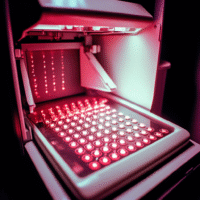Study Overview
This study investigated two non-invasive treatments for pain caused by calcaneal spurs: extracorporeal shock wave therapy (ESWT) and high-intensity laser therapy (HILT). The goal was to see which treatment was more effective in reducing pain and improving function.
How the Study Was Conducted
Patients with calcaneal spurs were randomly divided into two groups. One group received ESWT, while the other received HILT, both along with exercise programs. Pain levels were measured using a scale, and foot function was assessed at the start, after treatment, and three months later.
Key Findings
Both treatments led to significant pain relief and improved foot function:
- In the ESWT group, pain scores dropped from 7.8 to 4.0 after treatment and to 3.4 after three months.
- The HILT group also showed improvement, with scores decreasing from 7.5 to 4.2 post-treatment and to 3.5 at follow-up.
- Foot function improved more in the ESWT group than in the HILT group.
No serious side effects were reported for either treatment.
Conclusion
Both ESWT and HILT are effective treatments for calcaneal spur pain, with ESWT offering slightly better results in terms of function.
Practical Recommendations
Based on the study, here are some practical steps for clinics and patients:
Define Measurable Outcomes
Set clear goals for pain reduction and functional improvement when using ESWT or HILT.
Select AI Tools That Fit Clinical Needs
Choose AI solutions that can assist in monitoring patient progress and treatment effectiveness.
Implement Step by Step and Expand
Start with a pilot project using these therapies, track outcomes, and assess the real-world impact of the treatments.
Contact Us for AI Solutions in Medical Management
For more information, reach out to us:





























